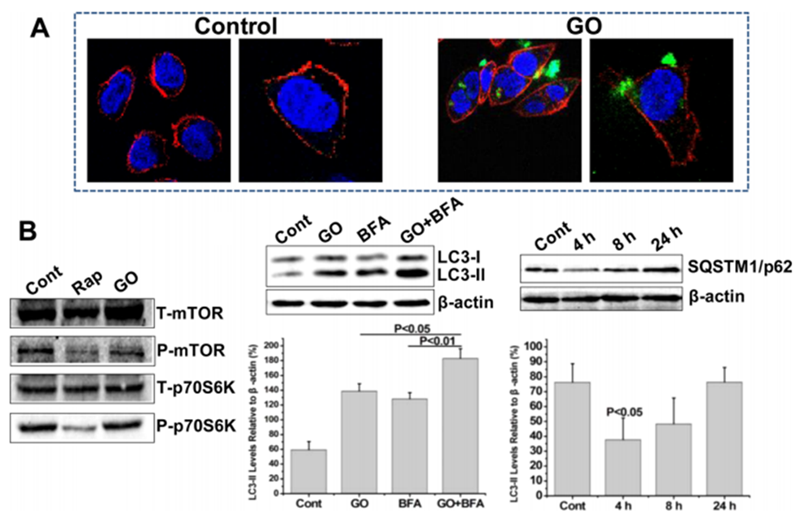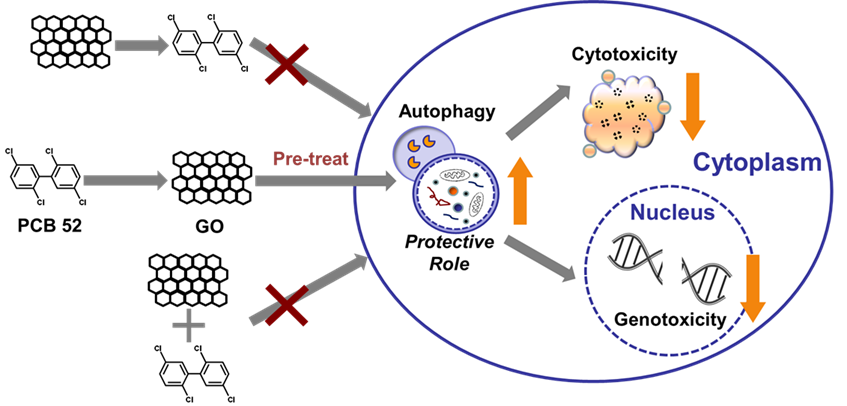
Graphene oxide (GO), as a two-dimensional carbon based nanomaterial, has potential applications in various fields, such as electronics, biomedicine, environmental protection and so on, owing to its unique structure and the mechanical, optical, and electronic properties. Depending on GO’s large surface area and abundance of oxygen-containing functional groups, GO has been proved to influence the environmental behavior of organic and inorganic pollutants. However, the effect of GO on pollutants-induced toxicity remains largely unexplored.
A team led by Prof. XU An in Institute of Technical Biology & Agriculture Engineering, Hefei Institutes of Physical Science (CAHIPS) of Chinese Academy of Sciences, has made great progress in investigating the combined toxicity of GO and polychlorinated biphenyls (PCBs). The paper entitled Graphene oxide attenuates the cytotoxicity and mutagenicity of PCB 52 via activation of genuine autophagy was published in Environmental Science & Technology.
Researchers found that with the help of human-hamster hybrid (AL) cells, a high sensitive mutation detective model, pre-treatment with GO dramatically decreased PCB 52-induced cytotoxicity and CD59 gene mutation. The toxic response in cells either pre-treated with PCB 52, then treated with GO or concurrently treated with GO. And PCB 52 did not differ significantly from the toxic response in the cells treated with PCB 52 alone.
Furthermore, the research demonstrated that the adhesion and uptake of GO by AL cells may first elevate the production of ROS. The uptake of nanosheets and the oxidative stress were both responsible for the followed induction of authentic autophagic effect. Through accelerating the degradation of impaired organelles, proteins, and PCB itself by autophagy, pretreatment with GO established a protective barrier and improved the capacity of resistance to toxicants before PCBs invasion, displaying an antagonistic interaction between GO and PCB 52.
These findings shed new light on the potential application of GO in PCB disposal, environmental and health risk assessment. This work was supported in part by grants from Major National Scientific Research Projects, Strategic Leading Science & Technology Program (B), National Natural Science Foundation of China grants, CASHIPS director’s fund.

Figure 1: (A) The interaction between GO and AL cells. (B) GO treatment alone elicited mTOR-independent genuine autophagy in AL cells. (Image by LIU Yun)

Figure 2: The schematic diagram showing the mechanism of the combined toxicity induced by GO and PCB 52: genuine autophagy induced by GO was involved in attenuating the toxicity of PCB 52. (Image by LIU Yun)

86-10-68597521 (day)
86-10-68597289 (night)

86-10-68511095 (day)
86-10-68512458 (night)

cas_en@cas.cn

52 Sanlihe Rd., Xicheng District,
Beijing, China (100864)

